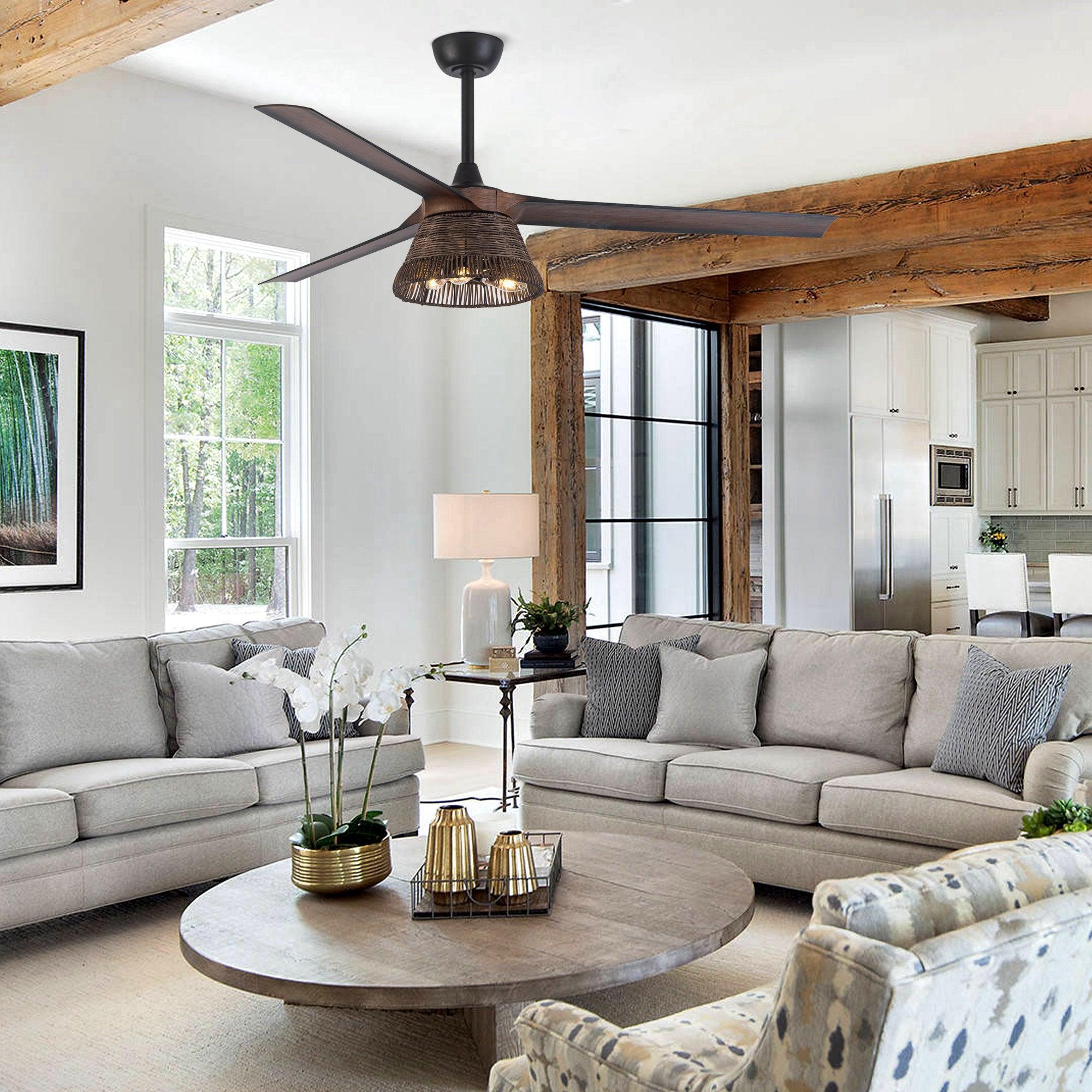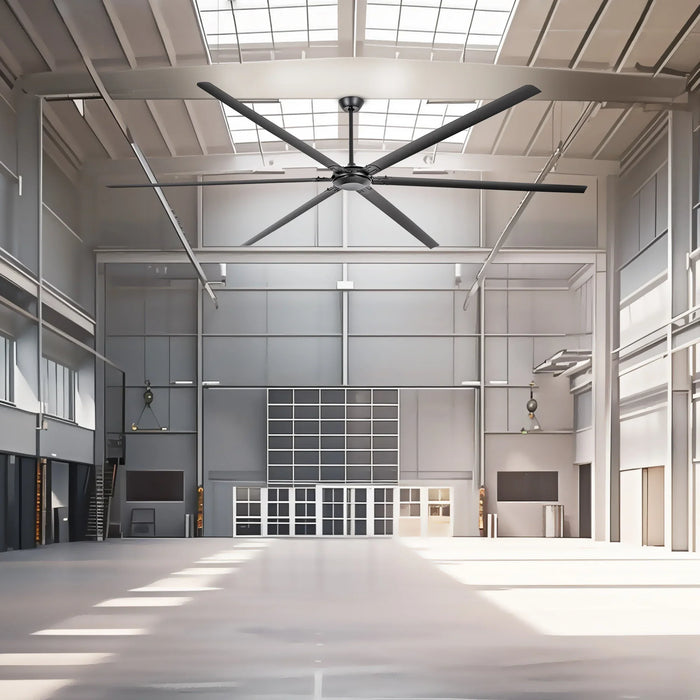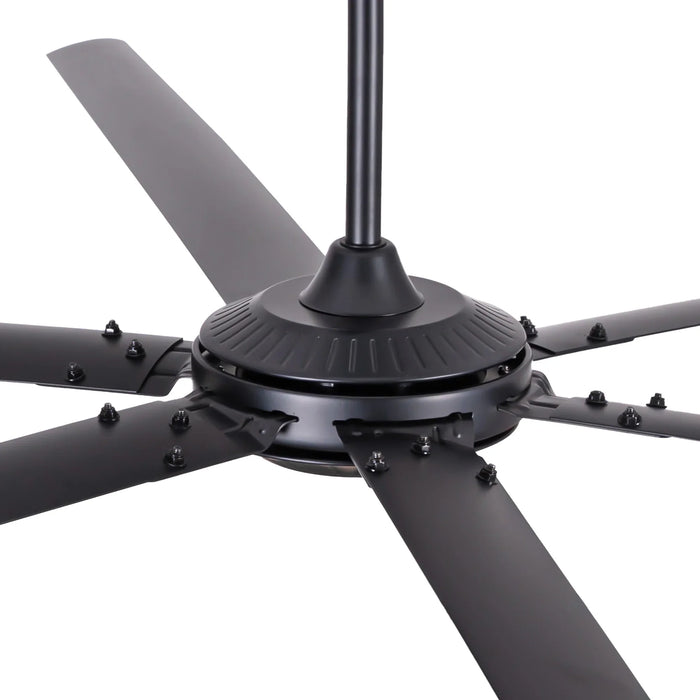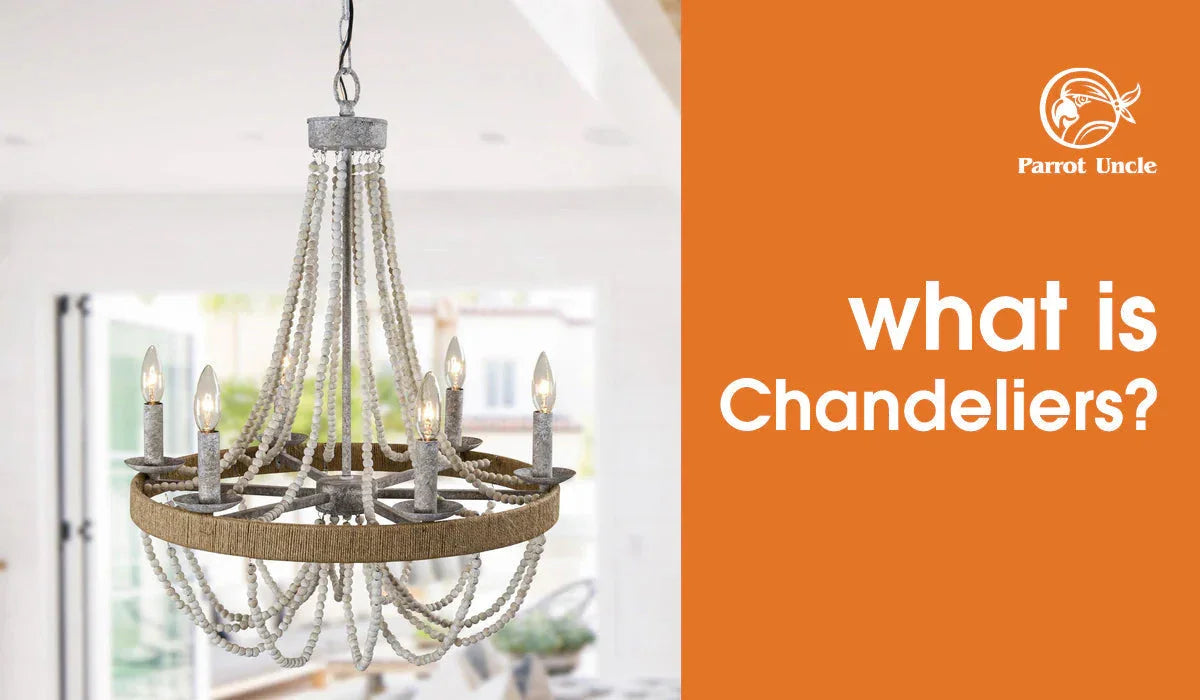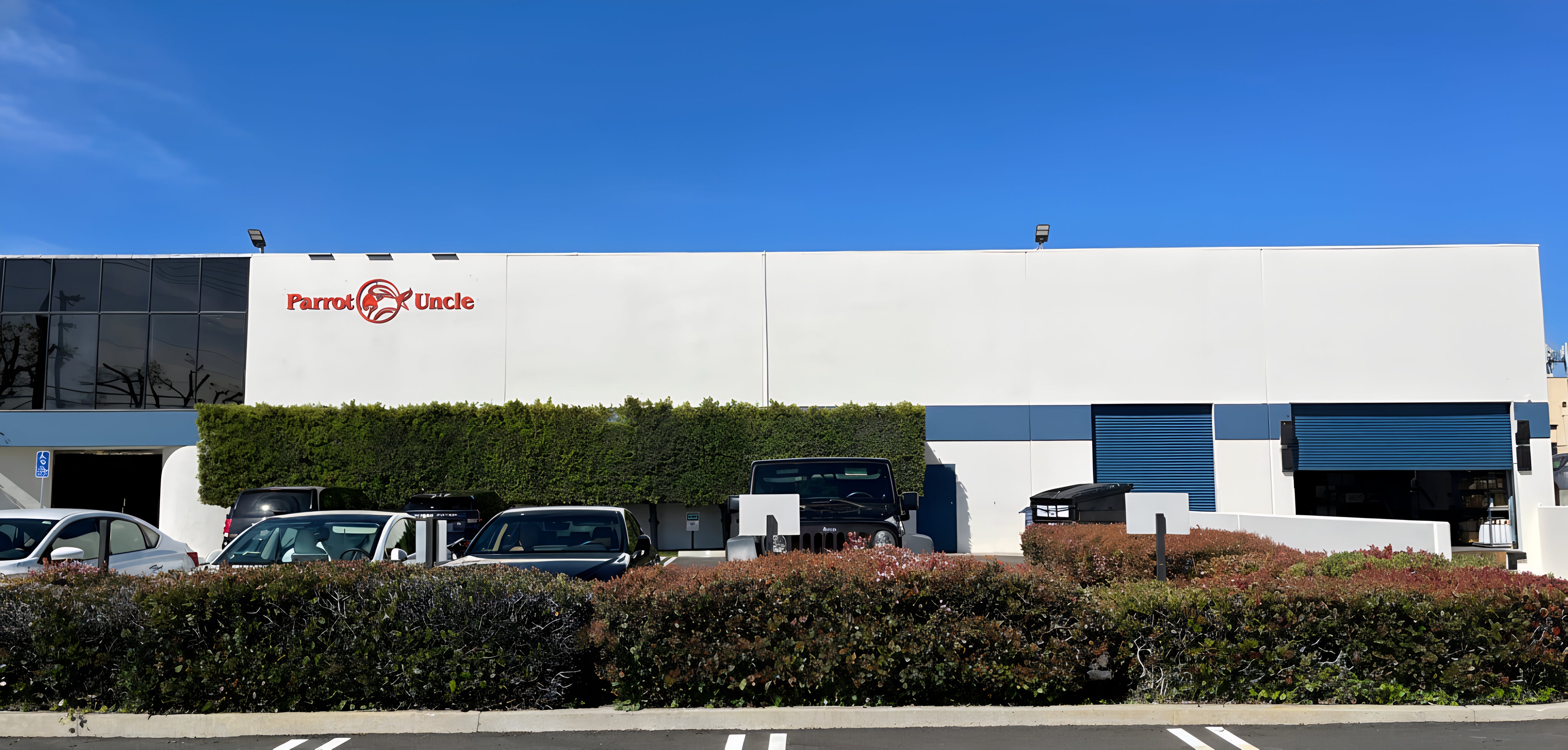Have you ever walked into a warehouse on a hot summer day and felt like you were entering a sauna? Or perhaps you've experienced the discomfort of sitting directly under a ceiling fan, feeling a constant draft? Many businesses and homeowners face these very challenges. Perhaps you’re considering a new fan system and are caught between the seemingly simple choice of a "normal" fan versus a High-Volume, Low-Speed (HVLS) fan.
But what is the actual difference? Is the hype around HVLS fans justified? Are they truly worth the investment? This comprehensive guide will dive deep into the nuances of both types of fans, comparing their functionalities, benefits, drawbacks, and long-term value. We'll explore real-world applications, share expert advice, and arm you with the knowledge to make the best decision for your specific needs.
Understanding the Fundamentals
Before we jump into the nitty-gritty details, let's establish a clear understanding of what each type of fan entails:
What is a "Normal" Fan?
When we say "normal" fan, we're typically referring to the everyday household fans or smaller commercial fans. These fans, often categorized by their high-speed, smaller blade designs, create localized airflow. Think of ceiling fans, pedestal fans, box fans, and small industrial fans. They operate on the principle of pushing air directly in a concentrated stream.
What is an HVLS Fan?
HVLS fans are a different beast altogether. Characterized by their large diameter blades (typically ranging from 7 to 24 feet) and low rotational speed, these fans are designed to move a massive volume of air across a large area. The goal isn't to create a forceful breeze, but to gently circulate air and destratify temperatures. They're commonly found in warehouses, factories, gyms, and large commercial spaces. The U.S. Department of Energy supports and advocates HVLS fans as an energy saving and efficient solution to air circulation.
9 Key Differences: HVLS vs. Normal Fans
Now, let's get to the heart of the matter. Here are nine crucial distinctions between HVLS and normal fans:
-
Airflow Volume: This is perhaps the most significant difference. HVLS fans move vastly larger volumes of air. A typical HVLS fan can circulate air across an area of up to 20,000 square feet, whereas a normal fan only affects a small, localized area.
-
Airflow Pattern: Normal fans produce a focused, turbulent airflow. In contrast, HVLS fans create a gentle, laminar airflow that spreads across a larger area. This destratification is key to temperature uniformity.
-
Coverage Area: As mentioned above, HVLS fans are designed for large spaces, whereas normal fans are better suited for smaller rooms or individual workstations.
-
Energy Efficiency: Surprisingly, HVLS fans are often more energy-efficient than normal fans for large spaces. While they require more power initially, the sheer volume of air they move and their ability to destratify temperatures reduces the need for constant HVAC system operation. Studies by leading energy consulting firms, like Navigant Consulting, have demonstrated energy savings of up to 30% when HVLS fans are integrated with existing HVAC systems.
-
Noise Level: HVLS fans are typically quieter than normal fans, especially at lower speeds. Their large blades rotate slowly, minimizing wind noise.
-
Speed: HVLS fans spin at a relatively low speed compared to normal fans. HVLS fans can typically reach a maximum speed of 200 RPM and a minimum speed of 40 RPM. While a normal residential fan spins at a higher speed up to 380 RPM.
-
Comfort Level: The gentle, consistent airflow of an HVLS fan creates a more comfortable environment compared to the localized, often drafty airflow of a normal fan.
-
Cost: The initial cost of an HVLS fan is higher than that of a normal fan. However, the long-term cost savings in energy consumption and improved comfort often outweigh the initial investment.
-
Maintenance: HVLS fans typically have lower maintenance requirements compared to numerous smaller fans, which can significantly reduce long-term operational costs.
A Deeper Dive into the "Why" and "How"
Why Does Airflow Matter?
Effective airflow is essential for several reasons:
- Comfort: Uniform temperature distribution prevents hot and cold spots, creating a more comfortable and productive environment.
- Energy Efficiency: By destratifying temperatures, HVLS fans reduce the workload on HVAC systems, leading to significant energy savings.
- Condensation Control: Consistent airflow helps prevent condensation buildup, which can lead to mold growth and damage to equipment.
- Improved Air Quality: Air circulation helps distribute fresh air and remove stale air, improving indoor air quality.
How Do HVLS Fans Destratify Temperatures?
The magic lies in the fan's design and operation. The large blades push air downward, creating a gentle column of air that reaches the floor. This downward movement forces the warmer air near the ceiling to mix with the cooler air at the floor, creating a more even temperature distribution. In the winter, the process is reversed, with the warm air being pushed downwards from the ceiling, reducing heating costs.
The Pain Points and Motivations of Customers
- Pain Points: High energy bills, uncomfortable working conditions, condensation problems, and inconsistent temperatures are all common pain points that drive customers to seek better airflow solutions.
- Motivations: Businesses are motivated by cost savings, improved employee productivity, and creating a healthier, more comfortable work environment. Homeowners are often motivated by increased comfort, reduced energy consumption, and improved air quality.
Case Studies: Seeing is Believing
Let's examine a couple of hypothetical case studies to illustrate the benefits of HVLS fans:
Case Study 1: Warehouse Efficiency
- Scenario: A large distribution warehouse struggles with high energy bills and complaints from employees about uncomfortable working conditions during the summer months.
- Solution: Installing HVLS fans throughout the warehouse significantly improved air circulation, destratified temperatures, and reduced the workload on the HVAC system.
- Results: The warehouse experienced a 20% reduction in energy consumption, improved employee morale, and reduced condensation issues.
Case Study 2: Gymnasium Comfort
- Scenario: A community gymnasium experiences high humidity levels and uneven temperatures, making it uncomfortable for athletes and spectators.
- Solution: Installing HVLS fans improved air circulation, reduced humidity levels, and created a more consistent temperature throughout the gymnasium.
-
Results: The gymnasium became a more comfortable and inviting space for all users, leading to increased attendance and satisfaction.

Strategic Implementation: A Step-by-Step Approach
Implementing HVLS fans effectively requires careful planning and execution. Here's a step-by-step approach:
- Assess Your Needs: Determine the size and layout of your space, identify existing airflow problems, and define your goals (e.g., energy savings, improved comfort).
- Select the Right Fan: Choose the appropriate fan size and features based on your specific needs. Consult with a qualified HVLS fan supplier for expert advice.
- Plan Installation: Ensure proper structural support and electrical connections are in place before installation.
- Optimize Fan Speed: Experiment with different fan speeds to find the optimal setting for your space and climate.
- Monitor Performance: Track energy consumption and employee feedback to assess the effectiveness of the HVLS fan system.
Tips and Tricks for Maximizing Benefits
- Integrate with HVAC: Coordinate the operation of your HVLS fans with your HVAC system to maximize energy savings.
- Adjust Seasonally: Adjust fan speed and direction based on the season to optimize comfort and energy efficiency.
- Consider Controls: Install fan controls to allow for easy adjustment of fan speed and operation.
- Regular Maintenance: Perform regular maintenance, such as cleaning the blades and checking for any loose connections, to ensure optimal performance.
Common Mistakes to Avoid
- Oversizing: Selecting a fan that is too large for your space can lead to excessive airflow and discomfort.
- Improper Placement: Placing fans in areas where they are obstructed or ineffective can negate their benefits.
- Ignoring Structural Support: Failing to ensure proper structural support can lead to safety hazards and equipment damage.
- Neglecting Maintenance: Neglecting regular maintenance can reduce fan performance and lifespan.
Table 1: Cost Analysis
| Feature | Normal Fan (Average) | HVLS Fan (Average) | Notes |
|---|---|---|---|
| Purchase Price | $50 - $500 | $1,500 - $5,000 | Varies widely based on size, features, and brand. |
| Installation Cost | $0 - $100 | $200 - $1,000 | HVLS fan installation often requires professional assistance. |
| Energy Consumption | 50 - 200 Watts | 30 - 150 Watts | HVLS fans can be more energy-efficient per square foot covered. |
| Maintenance Cost | $10 - $50/year | $50 - $200/year | HVLS fans generally require less frequent maintenance. |
| Lifespan | 2-5 years | 10-20 years | HVLS fans are built for durability and long-term use. |
| Estimated 10 Year Total Cost | $600-$2,500 | $1,950-$7,500 | Consider long-term energy savings and reduced maintenance. |
Table 2: Efficiency Comparison
| Feature | Normal Fan | HVLS Fan |
|---|---|---|
| Air Volume Moved | Low (localized airflow) | High (covers large areas) |
| Energy Consumption Per Sq Ft | Higher (especially for large areas) | Lower (more efficient for large spaces due to destratification) |
| Effective Coverage Area | Small (typically one room or workstation) | Large (up to 20,000 sq ft) |
| Temperature Uniformity | Poor (localized cooling, minimal destratification) | Excellent (destratifies air, creating consistent temperatures from ceiling to floor) |
| HVAC Load Reduction | Minimal (does not significantly reduce HVAC workload) | Significant (reduces HVAC workload by destratifying temperatures and improving air circulation) |
Table 3: Environment and Comfort
| Feature | Normal Fan | HVLS Fan |
|---|---|---|
| Noise Level | Generally louder, especially at high speeds. | Generally quieter, especially at low speeds. |
| Airflow Pattern | Direct, turbulent airflow; can create drafts. | Gentle, laminar airflow; more comfortable and less drafty. |
| Humidity Control | Minimal impact on humidity. | Can help reduce condensation by improving air circulation. |
| Air Quality | Can circulate dust and allergens. | Can help distribute fresh air and improve overall air quality when integrated with proper ventilation systems. |
| Comfort Level | Provides localized cooling, but can be uncomfortable for some. | Creates a more consistent and comfortable environment throughout the space. |
Table 4: Key Decision Factors
| Factor | Questions to Ask | Considerations |
|---|---|---|
| Space Size | How large is the area you need to cool? What is the ceiling height? | For spaces larger than a single room or with high ceilings, HVLS fans are generally the more effective choice. |
| Budget | What is your budget for the fan system? Are you willing to invest more upfront for long-term energy savings? | While HVLS fans have a higher initial cost, they can offer significant long-term cost savings in energy consumption and maintenance. |
| Energy Efficiency | How important is energy efficiency to you? Are you looking to reduce your carbon footprint and lower your energy bills? | HVLS fans are generally more energy-efficient than normal fans for large spaces due to their ability to destratify temperatures. |
| Comfort | What are your priorities for comfort? Do you want to create a more consistent and comfortable environment throughout the space? | HVLS fans create a more gentle and consistent airflow, reducing drafts and temperature inconsistencies. |
| Application | What is the primary use of the space? Are there any specific needs or requirements, such as condensation control or improved air quality? | Consider the specific needs of your application when choosing between HVLS and normal fans. |
Frequently Asked Questions (FAQs)
Q: Are HVLS fans worth the investment? A: In many cases, yes. While the initial cost is higher, the long-term energy savings, improved comfort, and reduced maintenance costs often outweigh the investment.
Q: How do I choose the right size HVLS fan for my space? A: Consult with a qualified HVLS fan supplier to determine the appropriate fan size and features based on your specific needs.
Q: Can HVLS fans be used in the winter? A: Yes. In the winter, HVLS fans can be used to destratify temperatures by pushing warm air down from the ceiling, reducing heating costs.
Q: How often do HVLS fans need to be maintained? A: HVLS fans typically require minimal maintenance, such as cleaning the blades and checking for any loose connections.
Q: Can HVLS fans be used outdoors? A: Some HVLS fans are specifically designed for outdoor use and are weather-resistant.
Q: Are HVLS fans noisy? A: No, HVLS fans are generally quieter than normal fans, especially at lower speeds.
Q: What is the typical lifespan of an HVLS fan? A: HVLS fans are built for durability and long-term use, with a typical lifespan of 10-20 years.
Q: Can I install an HVLS fan myself? A: HVLS fan installation often requires professional assistance to ensure proper structural support and electrical connections.


